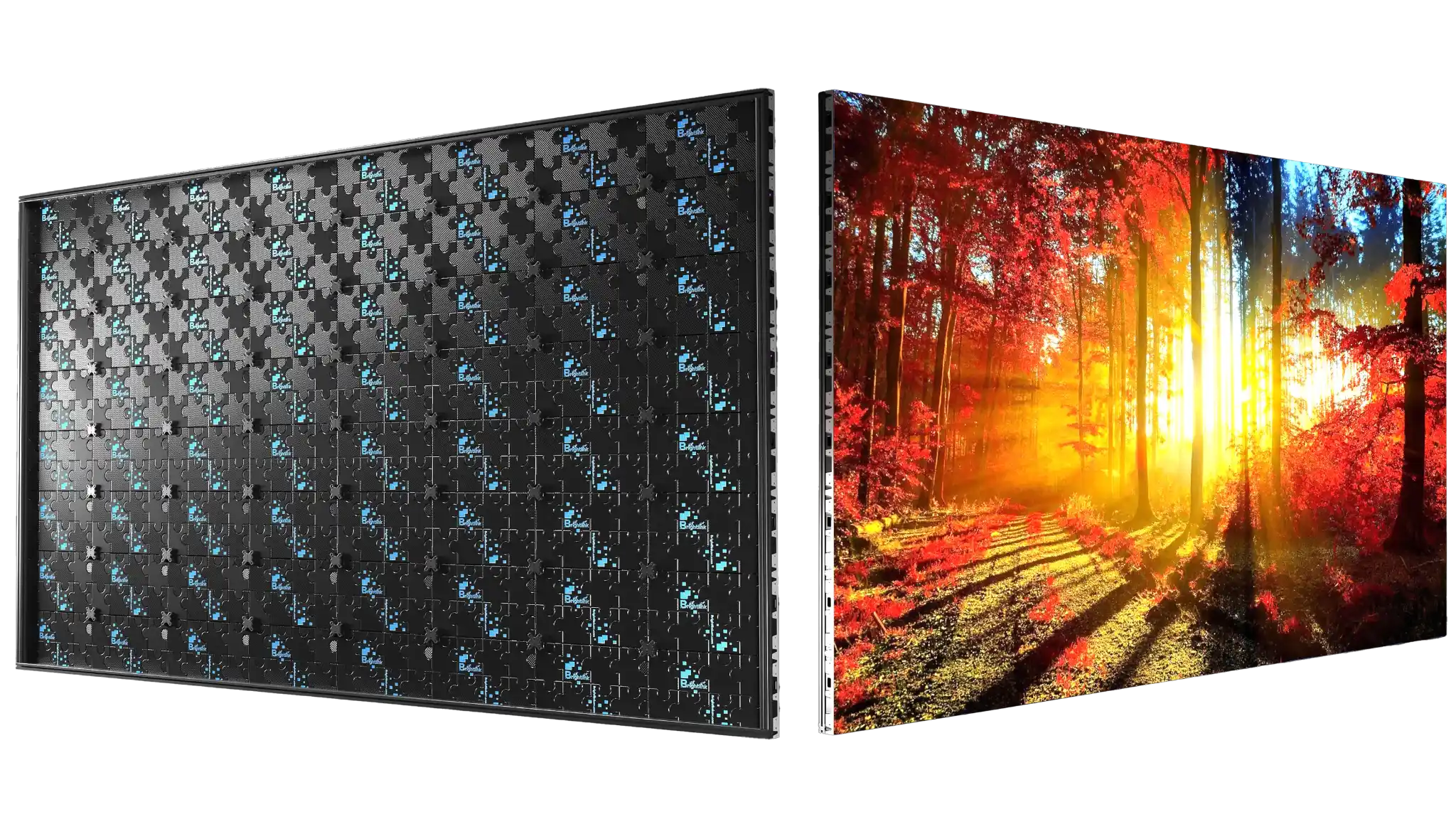Why Cable Distance Is Crucial for LED Displays?
When it comes to LED displays, what you see on the screen is only as good as the cables behind it. Every light, every color shift, and every piece of content depends on how well signals travel between devices. That's where the distance of cable transportation comes into the limelight. It's the silent factor that decides whether your screen shines bright or flickers in frustration.
In this blog, we will discuss how cable distance plays an important role for an LED display manufacturer.

The Real Role of Cables for LED Display Screen Manufacturer
LED screens don't work as standalone units. They're made up of several interconnected parts, modules, power supplies, controllers, and processors. All of these talk to each other via cables. Without proper connections, the screen simply can't function.
Understanding Cable Types and Their Effective Distances
Different cables serve distinct functions for an LED display screen for advertising outdoors. Each has a maximum distance it can cover before the signal starts to weaken. Here's what makes each type distinct and when to use them.
1. Ethernet (Network) Cables
Ethernet cables, like Cat5e and Cat6, are widely used for connecting LED displays to control systems. They're cost-effective and easy to install. For longer runs, signal repeaters can push the range up to 500 meters by chaining multiple segments together.
2. Optical Fiber Cables
Fiber optic cable is the go-to choice for long-distance transmission. They handle data over kilometers without signal loss. Multimode is more affordable, but single-mode handles larger setups better, making it worth the extra cost for stadiums or city displays.
3. HDMI Cables
Best for short connections between media players and LED processors.
- Standard HDMI: Works well up to 15-30 meters.
- HDMI with extenders: Can stretch to 120 meters through Ethernet or fiber adapters.
- For high-definition displays, HDMI fiber cables can even reach 500 meters without losing clarity.
4. DVI and VGA Cables
DVI handles digital video, but only up to 5 meters without extenders. VGA can reach 20-40 meters, but being analog, it's more prone to signal interference. They're suitable for older systems or nearby connections.
5. RS232, RS485, and USB Cables
These are used for device communication and maintenance. Each cable has its place, but none are one-size-fits-all. Mixing them up or ignoring their range limits can easily throw off your entire display performance.

How Distance Affects LED Display Performance
Cable distance isn't just about length; for an LED display screen manufacturer, it's about signal stability, timing, and quality. When a cable runs too long without the right support, a few key issues start showing up:
Signal Degradation
Every meter adds resistance. When the signal travels too far, data packets weaken or arrive late. This can cause flickering or color mismatches on the screen.
Power Drop
Long power cables can cause voltage drops. Modules at the end of the line might receive less current, leading to dim or uneven brightness.
Interference
Cables running alongside other electrical equipment may pick up electromagnetic interference. This disrupts data transmission, creating screen noise or delay.
Loss of Synchronization
In LED walls, precise timing keeps every pixel in sync. Poor cabling distances can cause delays between sections, breaking the visual flow.
A short, high-quality cable setup ensures clear data flow and consistent brightness. But for large-scale or outdoor displays, it's all about designing the layout carefully and using the right cables at the right lengths.
Steps to Choose the Right Cable for Your LED Setup
For an LED display manufacturer ordering cables or installing your system, it's smart to plan every connection point. These steps help make sure your setup performs without issues.
1. Map Out the Display Layout
Identify how far your processor, power supply, and display modules are from each other. This gives you a clear idea of how much cable you'll need for both signal and power.
2. Match the Cable Type to Distance and Function
- Use Ethernet for short-to-medium signal runs.
- Choose optical fiber for long-distance data transmission.
- Go for HDMI or DVI for close-range, high-resolution video input.
- Keep RS-485 for communication between controllers across larger setups.
3. Consider Extenders and Repeaters
These devices amplify signals across longer distances. Ethernet repeaters can extend signals up to 500 meters, while fiber amplifiers can cover several kilometers.
4. Check for Power Capacity
Ensure your power cables are rated for the current load and length. Undersized cables cause overheating and voltage drops.
5. Plan for Future Maintenance
Leave extra room for movement and possible upgrades. A tight or overextended setup often leads to accidental damage during maintenance.
Proper cable planning keeps installation clean, reduces the chance of failure, and ensures the LED display runs efficiently for years.
Conclusion
Cable transportation distance is one of those things people rarely think about until something goes wrong. Yet, it's the backbone of every LED display system. Every meter of cable impacts how well your visuals reach the screen. In the end, success for an LED display manufacturer isn't about fancy technology; it's about precision in the basics. Plan your distances, pick the right cables, and your display will shine bright without missing a beat.
Cinstar LED is a leading display manufacturer in China, specializing in the design and production of high-quality solutions for diverse applications. With a team of industry experts, each with a minimum of five years of experience, we have successfully managed thousands of projects, ranging from rental event setups to permanent commercial installations.
